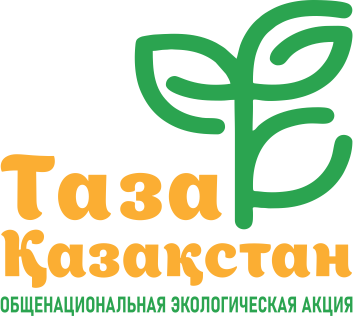The EU and Central Asia: Investments Promised, but Will the Region See the Money?
At the Samarkand Summit, the European Union pledged €12 billion to strengthen its partnership with Central Asia. But can the EU truly compete with China, Russia, and the United States in the race for resources and influence?

Фото: ankasam.org
All discussions between the leaders of Central Asian countries and European Commission President Ursula von der Leyen, as well as European Council President António Costa at the "EU–Central Asia" summit, revolved around four main areas of cooperation. These included critical raw materials, green energy, digital connectivity, and the Trans-Caspian transport corridor. The most expensive of these is the second: the EU intends to allocate €6.4 billion for green energy out of the €12 billion pledged to Central Asia. Cronos.Asia examined the current state of relations between a united Europe and Central Asia.
Resources and Corridors
The summit had been planned for some time. Hardly anyone in Brussels expected that just two days before its opening, U.S. President Donald Trump would impose tariffs on imports from dozens of countries, including EU member states—but that’s how things turned out.
In Samarkand, von der Leyen spoke carefully. When the topic of critical raw materials arose, she stated:
"These raw materials are the lifeblood of the global economy of the future. But they also attract global players who are interested only in extraction and exploitation. Europe has a different offer. We also want to be your partners in developing local industries. Value-added should remain local. Our track record speaks for itself."
The EU committed €2.5 billion to projects related to the extraction of critical raw materials.
Indeed, the global tariff war triggered by the U.S. affected even remote islands—Trump imposed duties on imports from Heard and McDonald Islands, where only penguins reside. Thus, the diversification of trade ties announced by the EU in December 2021 appears logical and justified. This move came under the Global Gateway initiative.
When von der Leyen first presented this initiative, she was more direct than in Samarkand:
"The Global Gateway is above all a geopolitical project aimed at positioning Europe on a competitive global market."
In essence, the EU is pursuing its own strategic interests. Branding Central Asia a "preferred partner" serves that purpose—especially given the region's rich reserves, including 38.6% of the world’s manganese ore, 30.07% of chromium, 20% of lead, 12.6% of zinc, and 8.7% of titanium.
The EU also intends to invest €3 billion into the Trans-Caspian transport corridor. Back in 2023, it was reported that EU funding for the Trans-Caspian route would include not just technical assistance in governance but also infrastructure support, with at least €40 million allocated initially. Additional financing is expected from EU member states and international financial institutions. The project’s progress will continue to be discussed later this year at the Investors’ Forum, aimed at attracting further capital.
Walls and Bridges
Despite these plans, experts remain skeptical about the EU's Central Asia agenda. The Global Gateway was introduced in December 2021—shortly before the outbreak of the Russia–Ukraine conflict in February 2022 and well before Donald Trump’s return to power in 2024. With Trump’s victory, Europe is likely to shift focus inward, raising doubts about the actual disbursement of the promised €12 billion to Central Asia.
Even the total €300 billion announced for the Global Gateway remains uncertain, given the fragile state of global financial institutions. The EU’s overall budget for 2025 stands at €199.4 billion. When it was approved, the head of the European Parliament’s budget committee, Johan Van Overtveldt, remarked:
"This budget targets urgent issues such as Russia’s aggression in Ukraine, ongoing migration pressure, escalating conflict in the Middle East, natural disasters, and most importantly, the competitiveness of our economies."
Notably absent from this list was cooperation with Central Asia—unless one counts the vague reference to economic competitiveness.
Moreover, the EU faces four formidable rivals in the region: China, the United States, the United Kingdom, and Russia. By the end of 2024, trade between China and Central Asia had reached $94.82 billion. In just the first half of 2024, Central Asia received 47% of all Chinese investments in the Eurasian region—amounting to $27.7 billion. China's Belt and Road Initiative (BRI), launched in 2013, boasts a cumulative investment of $1 trillion, whereas the EU’s Global Gateway—launched in 2021—has only pledged $300 billion so far.
Looking at EU–Central Asia relations, it becomes clear that the EU’s main interest lies in Kazakhstan, much like China’s. Thus, the interests of the Global Gateway may inevitably clash with the ambitions of the BRI.
As for Russia, its share in Central Asia’s total trade exceeds 30%, with cumulative investments since 2015 surpassing $25 billion. The UK, even before Brexit, had announced plans to actively shape the region’s regulatory environment. In Kazakhstan’s capital (then still Nur-Sultan), it helped establish the first commercial court in Eurasia based on British common law. Both London and Washington seem intent on counterbalancing the EU’s influence.
In today’s volatile geopolitical and geo-economic climate, the EU is likely to focus only on those projects in Central Asia that directly serve its own strategic needs—primarily, access to affordable resources. After Trump’s tariff wars, it’s unlikely the region can count on large-scale cooperation with the EU. Brussels will only take what it is offered—and not a bit more.
This article is in Russian
ЕС и Центральная Азия: инвестиции обещаны, но дойдут ли деньги до региона?
Любое использование материалов допускается только при наличии гиперссылки на cronos.asia.
Подписывайтесь на Telegram-канал Central Asia Cronos и первыми получайте актуальную информацию!


